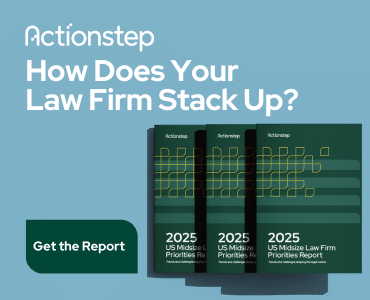When stalking canonical monsters, you get to pack light. For the most part, there’s only the one item you’ll need to finish the job, assuming you can get close enough, and so long as you maintain your nerve. If you’re going to do a werewolf, you need a silver bullet. If a vampire is your aim, you’re going to want a stake. I’m pretty sure you can finish Franken Berry with a spoon.
Traveling upon a rerouted mystic highway, lawyers tend to think of social media in the same fashion, at both ends of a spectrum. Those who refuse to accept there is any business utility to social media marketing discount the opportunity by proxy, in favor of the sacred objection. Those who view social media marketing as a cure-all imagine a new-fangled magic bullet, theorizing a circuitous, aphysical path through the hearts and minds of actualizing clients everywhere.
The answer lies somewhere in between. Though one thing’s for sure — there is no magic-bullet marketing approach for law firms. (You won’t sign up for Twitter and suddenly have to bar your door.) But no legitimate approach is ever truly valueless; it’s merely a question of degree, which is an important question. That is, even if Twitter isn’t your main client driver, there are still a number of ways it could deliver value (yes, including paying clients) to your practice.
The practical question, then, is how to strike the appropriate balance and use social media effectively as part of your broader marketing plan.
Social Media’s Best Use
Most of the law firms that drive social media participation do so to promote a direct client marketing approach. Only that’s not the best use of social media. Social media is not a static, but a kinetic exercise — the larger return in investment is acquired by the user who is willing to be active on these services. Part and parcel of being active is a willingness to talk with and to engage (that’s the buzzword there) with other users; but, it’s very difficult, if not impossible, to do so effectively with law firm clients and potential clients, given ethical and malpractice restrictions. The same strictures do not (so broadly) apply, however, to public and private social media engagement with other lawyers and ancillary professionals.
So, since attorneys have wider latitude to engage with other professionals on social media, their primary use of it should be as a professional-contacts development machine. Having the ability, with mere strokes of a keypad, to converse, across the world, with others in your field and related fields is literally unprecedented. Your professional network becomes unlimited — unless you have a specific hankering to talk shop with the greys, or otherworldly creatures.
Of course, we all know that professional network development is never done solely for its own sake. Ultimately, eventually, you’re still looking for more business, through the development of more referral pipelines. Lawyers who don’t use social media are doing pretty much the same thing — just from a limited pool of sources. Networking with other business professionals remains a tried-and-true route to income, if you’re willing to hustle. Staying away from social media, though, and limiting yourself to in-person networking forecloses your ability to reach large numbers of potentially interested parties.
Good business marketing involves effective distribution of content and commentary across a number of channels. The conscious choice to avoid potentially useful channels does not smack of good business sense. Nor is there any rule that says an online contact must forever and always remain an online contact. In fact, it makes good sense to develop more-personal relationships with those you first meet via social media, by extending invitations to lunch or coffee (mutually attended conferences make good meeting spots), or to Skype.
If you consider social media as another platform for broadcasting your professional expertise, it’s the one that allows you the most extensive and effective reach — if you’re consistent, and aggressive, about curating your following. If you consider that professional channels often evolve into referral pipelines, well … you can do the math.
This is not to say, of course, that social media is useless for direct client marketing. Even though your social media-based referrals should far outstrip your direct client intake, potential clients will examine your social media profiles as part of your marketing package. This is especially true for those potential clients who are more likely to get their news and information from social media, as more and more people are. So, perhaps your potential client is Googling you to see if you’re a legitimate professional within your field and finds your Facebook page that way. Or perhaps that potential client is directly searching for you on Facebook first. Either way, it pays to be on Facebook. (If you’re not on social media at all, it’s becoming more likely that a potential client will view you as not being serious about marketing your business, or will not be able to easily access a critical mass of information respecting your expertise, which could have swayed a hiring decision.)
And this is where we arrive at the completion of the circle: Social media’s not your magic bullet, just as in-person networking’s not your magic bullet. But bringing them together is about as close as you’ll come.
The Spread Offense
It’s vitally important, then, to conceive of your law firm marketing as a Hydra-equation. You want to package your expertise across a variety of channels. All wrapped up, you look good in a Google search, or as a cocktail party guest. Unbundled, spokes of your acumen are distributed via disparate marketing channels, always leading back to the hub. It’s important to provide spaces where interested persons can access a breadth of your expertise (website, social profiles); but, because there are so many options to access information these days, and because everyone makes difference choices about how best to access it, it’s important to be visible in as many of those spaces as you reasonably can be. The big social media providers are free or cheap, easy to use and get mad traffic.
There are fewer and fewer valid excuses to not begin the social media experiment.
With the overload of information that is the apparent birthright of modern humanity, think of how many times you need to register information before it really clicks for you. Potential clients are no different. You may need to get your content before them five times, in five different ways, across five different platforms, before they make the decision to contact you. It’s the spread offense of the marketing game, and social media is the most valuable weapon.
Now, think of what is probably the most common law firm answer to sourcing the effectiveness of a marketing strategy: a line on an intake form asking, “How did you hear about us?” Well, how didn’t you? We were sure hoping to swarm you, so that you couldn’t ignore us. Did it work?
Why not ask for various sources of exposure, and for a ranking of effectiveness among them? Why not make the question more prominent? Or create a separate form for clients addressing the ROI question?
Fortunately or unfortunately, running an effective marketing game in 2014 means that you will have a lot of balls in the air that you’ll need to track. At bottom, you’ll want to create and manage a marketing plan, or a marketing platform. You might also consider a CRM program. After all, you don’t want to rely solely on what you’ve been told — or so I’ve been told.
The answer, then, to the question, “Social media or in-person networking?” is “Yes.”
Jared Correia is Assistant Director and Senior Law Practice Advisor at the Massachusetts Law Office Management Assistance Program. Prior to joining LOMAP, he was the Publications Attorney for the Massachusetts Bar Association. Before that, he worked as a private practice lawyer. Jared is the author of Twitter in One Hour for Lawyers. He writes on practice management topics for Attorney at Work here, and for the LOMAP blog here. Follow @jaredcorreia.
Illustration ©ImageZoo.

















